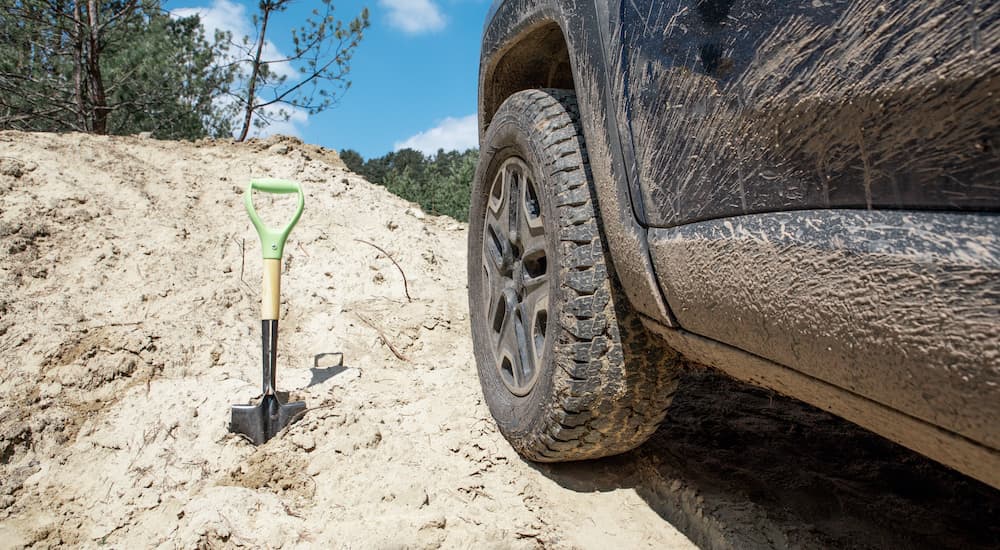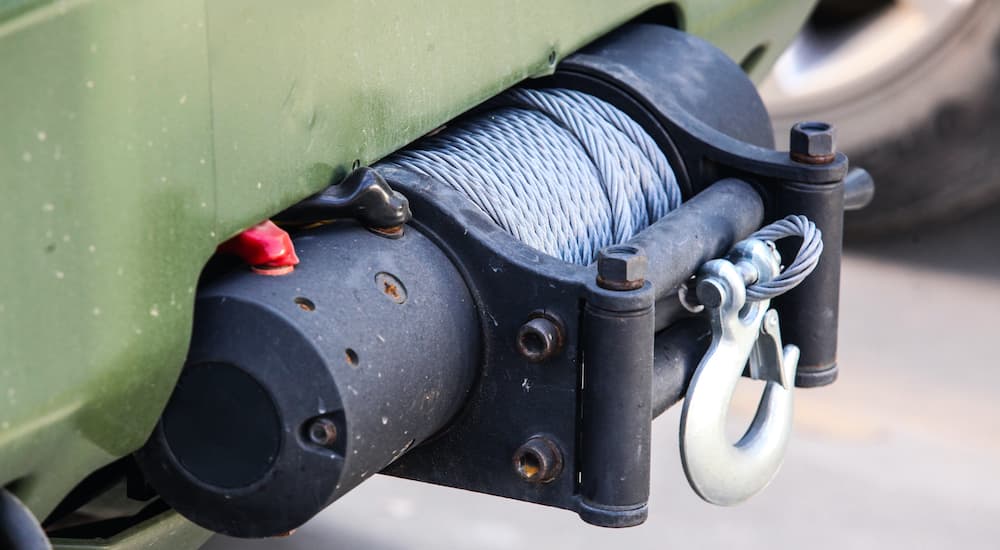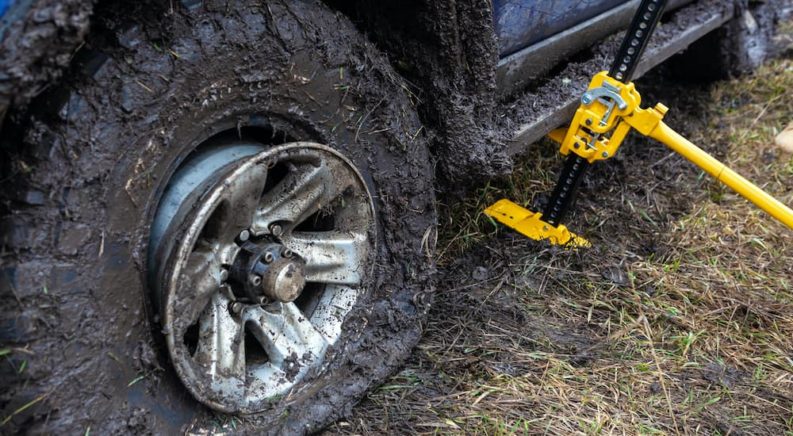When you search “Jeep Service Near Me,” the hope is that you’re simply in need of an oil change. However, since Wranglers are known for their off-roading adventures, you may be experiencing a flat tire or further damage from the trails. While it’s definitely not a bad idea to visit a service garage, it’s no fun having to tow your Jeep all the way there. Before heading out into the wild, you need to make sure that you are ready for anything that could happen. Whether your Jeep gets stuck in a mud pit, gets a flat tire, or breaks down, you are going to want to be able to get going again without having to wait for someone else to show up and help. That’s why we’re excited to share with you several ways you can better prepare for the trail.
Tools You Need to Bring
The Jack
The key to preparation in the automotive world is your toolbox. There are many assets you’ll want to include in your toolbox. The first one is at least a 2-ton-capable jack. While your Wrangler does sit up pretty high, you still want to have a jack to lift up your vehicle in case of a flat. This provides additional space, releasing pressure on the tire. Just remember to never place yourself under the vehicle when using the jack. If the jack slips or fails while you’re under the vehicle, you may become injured.
While these jacks are handy to have, they can take up quite a bit of space. Since you’re driving a Wrangler, you may not want to occupy your precious amount of storage space. In this case, we recommend getting a jack mounting bracket for your Wrangler. These typically attach to the hood and help save your cargo area space for other items.
Tire Repair Kit
While some Jeeps are spare-free, most include a spare tire (unless you’ve already used it.) But before making the swap, it can be quicker and easier to use a tire patch for minor punctures. Only use tire repair kits when the tread area is affected. When the whole tire busts or the sidewall is damaged, you need to replace the whole tire. Only use for repairs that are ¼ of an inch or smaller.
Air Pump
There’s no point in bringing along a tire repair kit if you don’t also have an air pump. Once you patch your tire, you’ll have to replace the air that was lost when it was down. While you obviously can’t carry around an entire air compressor, there are mini air compressors available that are powered through your 12V outlet or attach directly to your car battery. You can even get rechargeable, cordless ones. However, we recommend sticking with the cord to ensure usability.
Important Hand Tools
When it comes time to repair and replace parts on the trail, you need to make sure you’ve got the right tools for the job. It’s best to pack a tool kit, as you never know what exact sizes you may need. Be sure to include wrenches of all sizes, screwdrivers, pliers, socket extensions, and an adjustable wrench. As strange as it sounds, it’s a good idea to bring along a powerful telescoping magnet, too. This will help you reach broken parts and pieces that may get stuck in inaccessible locations.

A Shovel
While Wranglers are widely capable of tackling the mud, even the Wrangler may fall prey to deep mud pits. When this happens, it’s good to have a shovel handy to help dig yourself out. Simply dig the mud out from around your tires until you can gain enough traction to get up and out (which shouldn’t be hard when you’re rocking a Wrangler.) A classic D-handle shovel is nice, but there are also off-road shovels designed for off-road use that make the job even easier. These off-roading shovels also fold for easy storage.
Installing a Winch and How to Use It
When it comes to winch installation, the first thing you’ll need to invest in is a winch plate. This is a flat platform that attaches to your bumper. Depending on your specific setup, you may need to temporarily remove mud plates or other add-ons that are in the way. You’ll want to hand-thread your screws before lining them up to mount the winch onto the bumper properly. Before tightening the screws, make sure the winch is pushed up against the front bar, then secure the screws.
Finally, you need to install the fairlead. Release the clutch on the winch and tug on the cable until a few inches of cable are peeping out. Then, secure the fairlead using bolts. When it comes to wiring the winch, each specific winch will include its own instructions, which should be followed to the letter. Keep in mind that some winches are made to work with stock Wrangler bumpers, while others are not. This is something you’ll want to check before purchasing your winch.

What to Do When You Get a Flat on the Trail
The first step here is to not drive on the tire any further than you have to. That said, make sure you’re pulled over somewhere that’s level and safe. Try to get the Jeep on flat ground if possible.
You’ve already got your spare, your tire repair kit, and your jack, but your flat-repairing process will look different depending on your specific situation. As we stated before, tire repair kits are only useful when the damage is minimal (tread tears that are ¼ of an inch and smaller).
When the tire is busted, or the sidewall is damaged, it’s time to complete the tire replacement process. Unlike small cars and commuter vehicles, the Wrangler’s spare tire can actually serve as a long-term replacement. When you’re off-roading, you shouldn’t depend on “donut” compact spare tires, as they’re not particularly safe to use off-pavement–even temporarily.
Since the Wrangler’s spare is already equipped with the wheel and all, it’s quicker and easier to switch out the wheel/tire combo completely rather than replace just the tire. To do this, first, loosen the lug nuts using the appropriately sized wrench or socket.
Then, use your jack to lift the Jeep higher. Remove the old wheel and tire and replace them with the spare. As long as you’re rocking your stock tires, the Wrangler’s stock spare will fit, so you don’t have to waste time testing the wheel’s fit or hardware compatibility (if you do upgrade to larger tires, always make sure to get five and replace the spare as well). Gently tighten the nuts in a criss-cross pattern to install the spare tire combo. The process is now complete, and you’re safe to hit the trails!
Spare Parts and Necessities to Keep Handy
While it’s certainly more likely that you’ll need a spare tire when trailing, remember that anything can go wrong on the trails, just like it can on the highway. That’s why it’s good to keep some spare parts handy, such as wiper blades, spark plugs, extra oil jugs and an oil filter, fuses, and more. Pretty much anything that could lead to malfunctioning parts and potential “breakdowns.”
Speaking of which, it’s always smart to keep gasoline handy, too. While it’s smart to fill up your tank and check the trail’s length before you get started, additional gasoline is still useful in case you get lost, trail off, or end up using more fuel than expected.
Always Prep, Never Panic!
It’s tempting to just get up and go, but safe and productive trailing takes serious preparation. While your friends may look at you like you’re preparing for a zombie apocalypse, remember that the trip will go much more smoothly for everyone if you’re prepared for any and all potential setbacks. Plus, when everyone else shows up unprepared and your friend ends up knee-deep in mud, you get to come in looking like a hero. You’ve got nothing to lose by heading out to the trail prepared for anything.

